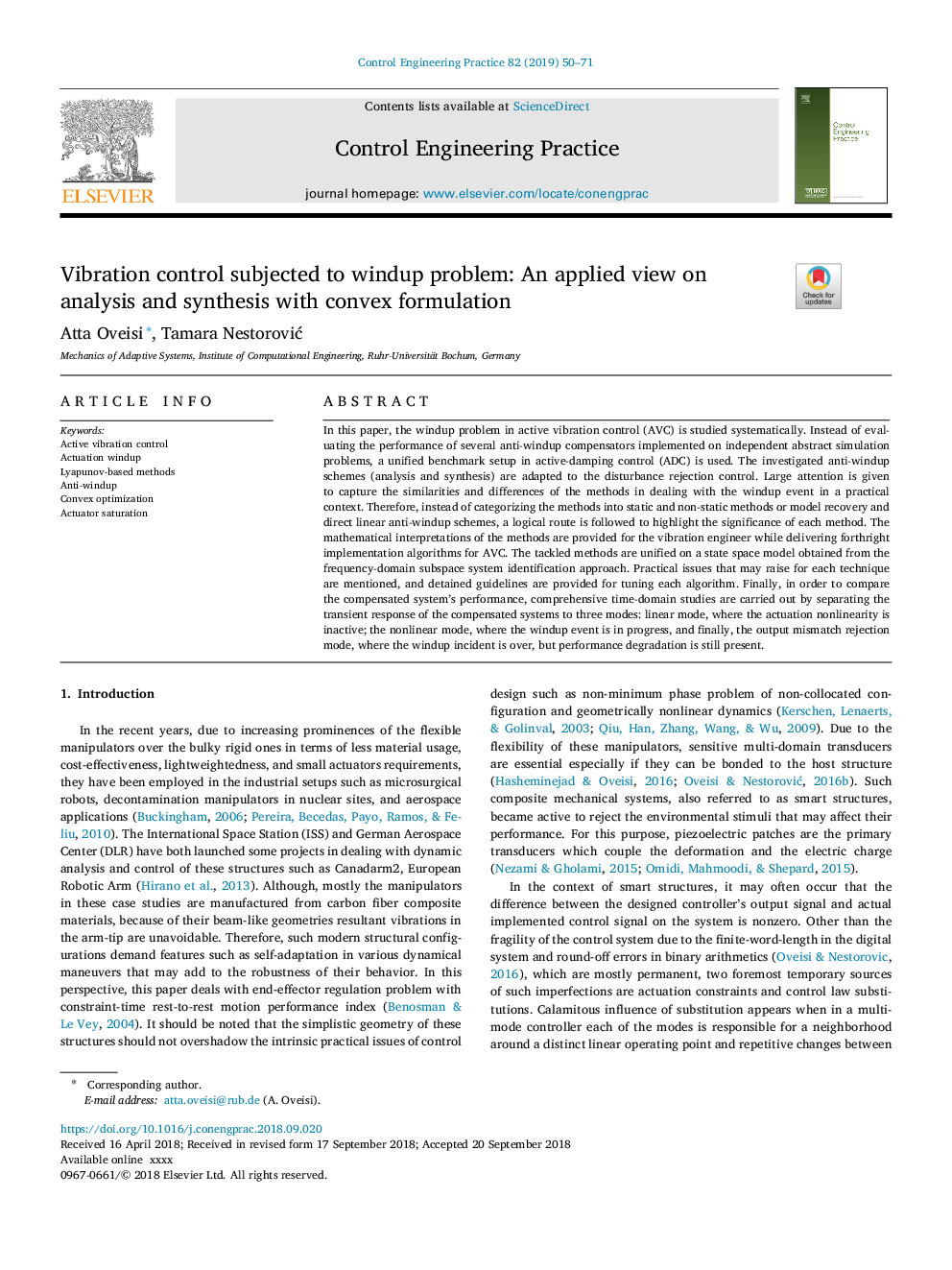| Article ID | Journal | Published Year | Pages | File Type |
|---|---|---|---|---|
| 11012225 | Control Engineering Practice | 2019 | 22 Pages |
Abstract
In this paper, the windup problem in active vibration control (AVC) is studied systematically. Instead of evaluating the performance of several anti-windup compensators implemented on independent abstract simulation problems, a unified benchmark setup in active-damping control (ADC) is used. The investigated anti-windup schemes (analysis and synthesis) are adapted to the disturbance rejection control. Large attention is given to capture the similarities and differences of the methods in dealing with the windup event in a practical context. Therefore, instead of categorizing the methods into static and non-static methods or model recovery and direct linear anti-windup schemes, a logical route is followed to highlight the significance of each method. The mathematical interpretations of the methods are provided for the vibration engineer while delivering forthright implementation algorithms for AVC. The tackled methods are unified on a state space model obtained from the frequency-domain subspace system identification approach. Practical issues that may raise for each technique are mentioned, and detained guidelines are provided for tuning each algorithm. Finally, in order to compare the compensated system's performance, comprehensive time-domain studies are carried out by separating the transient response of the compensated systems to three modes: linear mode, where the actuation nonlinearity is inactive; the nonlinear mode, where the windup event is in progress, and finally, the output mismatch rejection mode, where the windup incident is over, but performance degradation is still present.
Related Topics
Physical Sciences and Engineering
Engineering
Aerospace Engineering
Authors
Atta Oveisi, Tamara NestoroviÄ,
